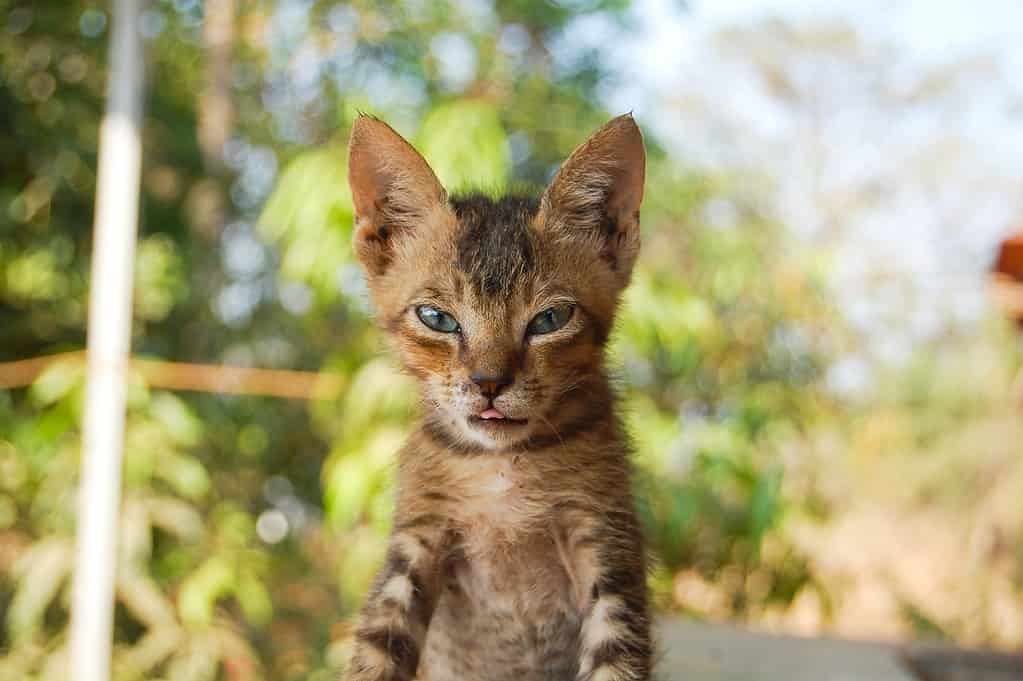Many people let their cats roam freely outside, thinking it is good for their cats’ well-being. Whether this practice benefits cats is debatable, but according to scientists, free-ranging domestic cats are not good for the well-being of other animals. Simply put, your little furry friend going outside isn’t doing anyone any good.

Globally, free-roaming domestic cats hunt down 3.7 billion birds and 20.7 billion mammals each year. A new study further reveals that out of the 2,000 animal species these cats prey upon, 347 are of conservation concern.
“A total of 347 (16.65%) cat-consumed species were of conservation concern, listed as Near Threatened, Threatened (i.e., Vulnerable, Endangered or Critically Endangered), or Extinct on the IUCN Red List, with these tallies including 7.1% of the world’s birds of conservation concern, 4.9% of mammals, and 2.7% of reptiles,” the study authors note.
Free-ranging domestic cats are threatening wildlife
Unlike pet cats that are kept indoors, free-ranging domestic cats behave more akin to “invasive species spread by humans.”
For instance, currently, over 46 million households in the US have cats and about 20% of these owners let their cats roam outside, it means that nearly 10 million domestic cats are out hunting local wildlife every day in the US.
The situation is possibly worse in the UK another country with millions of household cats but 74 percent of these households have free-ranging cats.
The current study also suggests that the number of species of conservation concern threatened by free-ranging cats is thrice in islands as compared to continents — now we know why it is so.
To give you a clear idea of the damage that these cats cause to nature, here are a few examples; a research paper published in 2013 claims that such cats are also responsible for the highest number of anthropogenic bird and mammal deaths in the US.
Another report from the Association of Fish and Wildlife Agencies claims that free-ranging domestic cats have alone caused the extinction of 63 species. They eliminate 10 times more wildlife than any other comparable natural predator.
What makes free-roaming cats so dangerous is that these animals are generalist predators, meaning that they can hunt and eat a wide variety of animals.
“Our study sheds light on the predatory habits of one of the world’s most successful and widely distributed invasive predators. One attribute that has allowed cats to be successful invaders is their generalist diet,” the study authors note.
They concluded that the diet of cats includes:
- 463 reptile species;
- 431 mammal species;
- 119 insect species;
- 981 bird species;
- and 57 amphibian species, plus 33 species from other groups of animals.
Basically, they’ll kill almost anything weaker, smaller, and alive.
Moreover, cats that roam outside may come in contact with diseased animals, carry pathogens, and transmit diseases such as toxoplasmosis to humans.
Not much is being done to address the cat menace
When we asked the researchers if policymakers, authorities, or conservationists have been doing anything to stop the catastrophic loss of wildlife caused by free-ranging cats, they could only highlight two examples.
“In places like Hawaii and New Zealand, predator-proof fences are used to keep cats out of some specific conservation areas,” Christopher Lepczyk, one of the study authors and alumni professor at the College of Forestry, Wildlife and Environment in Auburn University, told ZME Science.
It seems like the efforts are very limited and there is an urgent need to take action. Hopefully, this study will grab the attention of cat owners and policymakers towards this growing wildlife crisis.
The study is published in the journal Nature Communications.


